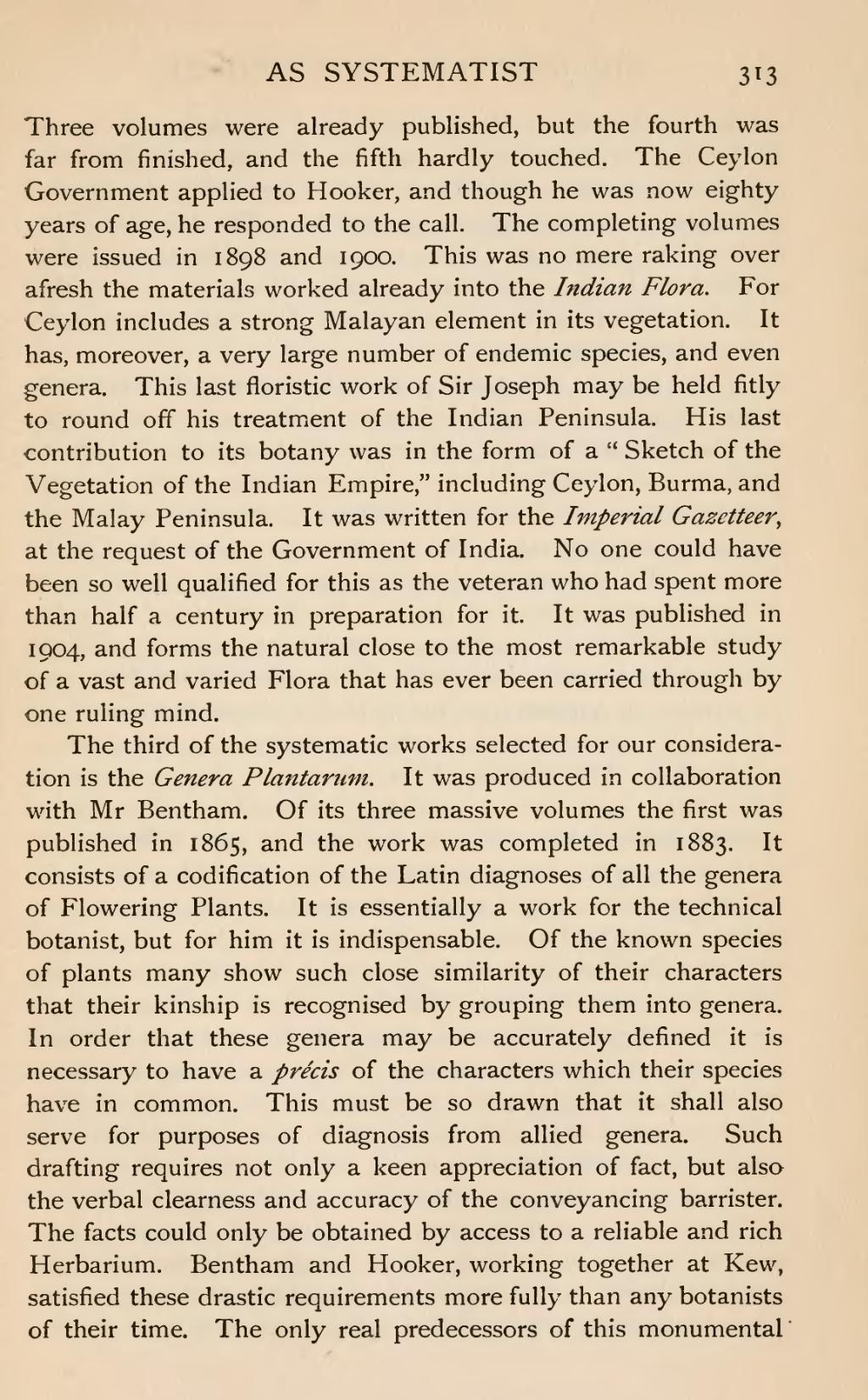Three volumes were already published, but the fourth was far from finished, and the fifth hardly touched. The Ceylon Government applied to Hooker, and though he was now eighty years of age, he responded to the call. The completing volumes were issued in 1898 and 1900. This was no mere raking over afresh the materials worked already into the Indian Flora. For Ceylon includes a strong Malayan element in its vegetation. It has, moreover, a very large number of endemic species, and even genera. This last floristic work of Sir Joseph may be held fitly to round off his treatment of the Indian Peninsula. His last contribution to its botany was in the form of a "Sketch of the Vegetation of the Indian Empire," including Ceylon, Burma, and the Malay Peninsula. It was written for the Imperial Gazetteer, at the request of the Government of India. No one could have been so well qualified for this as the veteran who had spent more than half a century in preparation for it. It was published in 1904, and forms the natural close to the most remarkable study of a vast and varied Flora that has ever been carried through by one ruling mind.
The third of the systematic works selected for our consideration is the Genera Plantarum. It was produced in collaboration with Mr Bentham. Of its three massive volumes the first was published in 1865, and the work was completed in 1883. It consists of a codification of the Latin diagnoses of all the genera of Flowering Plants. It is essentially a work for the technical botanist, but for him it is indispensable. Of the known species of plants many show such close similarity of their characters that their kinship is recognised by grouping them into genera. In order that these genera may be accurately defined it is necessary to have a précis of the characters which their species have in common. This must be so drawn that it shall also serve for purposes of diagnosis from allied genera. Such drafting requires not only a keen appreciation of fact, but also the verbal clearness and accuracy of the conveyancing barrister. The facts could only be obtained by access to a reliable and rich Herbarium. Bentham and Hooker, working together at Kew, satisfied these drastic requirements more fully than any botanists of their time. The only real predecessors of this monumental
